Learn more about generator
Learn more about generator
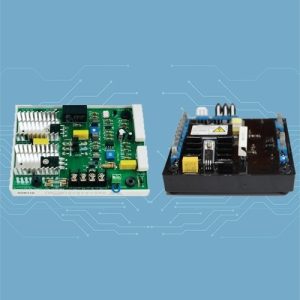
A generator is a combination of an engine (prime mover) that produces mechanical energy from fuel and an electrical generator (alternator) that converts mechanical energy into electricity. These two parts fit together to form one piece of equipment.
Mechanical generators are a common power source in the humanitarian sector apart from the public grid, mainly because they are usually available and can be obtained and installed relatively quickly in almost all locations. Generators are built on well-known technology and finding a good technician to install one can be simple in many contexts. However, the generator is expensive to operate, requiring frequent and complex maintenance as well as continuous fuel supply. Generators can also cause many problems, such as noise, vibration, pollution, and more.
Generators are mainly useful in three types of situations:
- As a main source of energy when a public electricity network is not available or when the reliability of the network is very poor.
- As a backup power source when investing in a more efficient power source is not possible: emergencies, short-term installation etc.
- As a backup power source for buildings with very high energy needs (mainly buildings equipped with air conditioning or electric heaters).
- As a backup power source for facilities that maintain cold chain capabilities.
In all other cases, a more comprehensive evaluation must be performed to evaluate generator alternatives. When considering using a generator as a primary or backup power source, do not underestimate the time required to handle the equipment or to budget for the preparation of its installations.
Properties
Below are the main characteristics to consider when choosing the right equipment to cover the needs.
Generator power
The first thing to evaluate when looking for a generator is its size – how much power can it generate?
Example: Standard sticker on the side of the generator
Power rating is standardized according to ISO-8528-1. The most common criteria are:
| Generator classification according to ISO standard | Load estimation | Running time restrictions |
|---|---|---|
| Primary Rated Power ( PRP ) | Rated for variable load | This power is available during unlimited hours of use with a variable load factor. The load can be increased by 10% for a maximum of one hour every 12 hours, but not to exceed 25 hours in one year. |
| Continuous operating power ( COP ) | Rated for constant load | This power is available during unlimited hours of use with a constant load factor. Overloading is not allowed. |
| Emergency standby power ( ESP ) | Rated for variable load | This power is only available during 25 hours per year with variable load factor. 80% of this energy is available within 200 hours per year. Overloading is not allowed. |
Chart: Loading types
Most of the time, primary rated power ( PRP ) is the only one that is relevant when purchasing a generator. When purchasing a generator, check whether the generator power is indicated without referring to the standardized rating method. If a rating model is not indicated, consult the manufacturer or obtain documentation from the vendor.
Power can be rated as either watts (W), kilowatts (kW), volt-amperes (VA) or kilovolt-amperes (kVA). For clarity, 1 kW = 1000 W, and 1 kVA = 1000 VA
The watt rating indicates real power (P); The volt-ampere rating indicates apparent power (S). Only real power should be considered when planning consumption. Real power is the power actually consumed or used in an AC circuit, and is therefore how power needs and power consumption in a diagnostic test are calculated.
If only apparent power (in kVA) is indicated, you can evaluate real power using the following general formula:
P ( W ) = S ( V A ) × 0 . 8 �(�) = �(��) × 0.8
0.8 of apparent power is the assumed real power factor. This may vary from machine to machine, but 0.8 is a reliable average value.
When choosing a generator, it will need to at least accommodate the power calculated in the diagnostic exercise. However, the following precautions must be observed:
Don’t confuse kilowatts with kilovolt-amperes : Installation power needs are usually calculated in kilowatts while generator power is usually estimated in kilovolt-amperes. In this case, divide by 0.8 (or add 20%) to convert installation power from kW to kVA.
| Example: | If the assumed power requirement for the installation is 6,380 watts, how do we determine the size of the generator and what kVA value it should have?
The generator power must be at least 6.4 kW of primary rated power (PRP). To determine kVA:
6 . 4 / 0 . 8 = 8 K Y L O F W L T A M B Y R M N A L Q W E A L M Q D R E L A O L E ( P R P ) 6.4 /0.8= 8 kVA from Initial rated power(���)
Power of 6380 watts requires a generator of at least 8 kVA. |
|---|
Consider lower operating rates : The power a generator can provide decreases with increases in altitude and temperature. The following chart indicates the correlation coefficients in the environmental factors that should be reduced:
|
Learn more about generator
Note that the temperature inside the generator room can be much higher than the ambient temperature.
| Example: | The generator has an apparent power of 10 kVA, and will operate at an altitude of 1000 metres, and in the generator room at an average temperature of 45°C. What will be the expected power output:
Height adjustment:
10 K J L F W L T A M B Y R × ( 1 − 0 . 099 ) = 9 . 01 K Y L O F W L T A M B Y R 10 kVA x (1 – 0.099) = 9.01 kVA
Average temperature 45°C:
9 . 01 K J L F W L T A M B Y R x ( 1 – 0 , 054 ) = 8 . 52 K J L F W L T A M B Y R 9.01 kVA � (1 – 0.054) = 8.52 kVA
The “actual” apparent power is 8.52 kVA. |
|---|
Revolution per minute (RPM)
Generator drives typically include any of the following:
- 1500 RPM: Intended for heavy use (6+ hours operation) and capable of reaching high power.
- 3000 RPM: Intended for short-term use, with better power/volume and power/weight ratios but higher fuel consumption per hour.
Most humanitarian actors prefer 1,500 rpm generators.
Noise level
The engine is very noisy during operation. Noise level is an important consideration when looking for a generator, as they typically operate during work or rest hours. Continuous noise even at a very low level can become exhausting over a long period of time.
Noise levels are indicated in dB(A) LWA. Here are some common sounds for comparison purposes.
|
Learn more about generator
Average noise in the office should be around 70 dB(A), while the noise level in the bedroom at night should be less than 50 dB(A).
Note that when comparing noise levels at different distances:
- dB(A) at 4 meters ≈ dB(A) LWA – 20.
- The noise level decreases by 6 dB each time the distance from the source doubles.
| Example: | A 97 dB(A) LWA generator is located in the generator room located 15 meters from the building. What level of sound will be heard in the building?
97 dB(A) LWA is equivalent to 77 dB(A) at 4 metres
77 d y s y b l a n d 4 a m t a r = 71 d y s y b l a n d 8 a m t a r 77 dB at 4 meters = 71 dB at 8 meters
71 d i s i b l a n d 8 a m t a r = 65 d i s i b l a n d 16 m t ra 71 dB at 8 meters = 65 dB at 16 meters
The noise level in the building will be around 65 dB(A) , possibly lower depending on the sound insulation of the generator room and office. This is an acceptable level for an office but not acceptable for a guest house at night. |
|---|
In general, it is recommended not to use generators that produce a noise level higher than 97 dB(A) LWA. If the generator is to be used at night, it is recommended to use a sound dome, or build a sound wall to mitigate some of the noise pollution.
Tank capacity
The generator cannot be refueled while it is running, so tank capacity is one of the main factors determining self-sufficiency. An average estimate of hourly consumption for a generator operating at 1500 rpm is 0.15 liters x rated capacity. The fuel tank should be selected accordingly.
| Example: | An 8 kVA Primary Rated Power ( PRP ) generator powers the office without refueling during the working day (10 hours). Knowing these numbers, what is the proposed tank size?
The hourly fuel consumption of this generator is:
0 . 15 x 8 = 1 . 2 liters per hour 0.15 x 8 = 1.2 liters per hour
The fuel tank calculation is:
1 . 2 x 10 = 12 liters 1.2 x 10 = 12 liters
So, the fuel tank capacity should be at least 12 litres |
|---|
It is not recommended to operate a tank at less than 1/5 of its capacity; Low tank volumes can pull particles and debris settled at the bottom of the tank into the fuel line, potentially posing a hazard to the engine.
Fuel
Generators, like vehicles, can use diesel or gasoline, and have their own advantages and disadvantages. Diesel generators are more expensive, but diesel is often cheaper than gasoline and diesel generators have better power/volume and power/weight ratios than gasoline generators.
Fuel should be chosen according to the local price and availability of both fuel types. One point to consider is the type of fuel used by the vehicles in the organisations. Using the same fuel for both generators and vehicles can reduce the complexities associated with keeping multiple types of fuel in stock. Safety may also be a concern for very large amounts of fuel – diesel also has a much higher flash point than petrol, meaning it will only ignite outdoors at temperatures above 52°C while petrol can ignite at freezing temperatures.
Security
Generators should be equipped with a residual current circuit breaker, so current surges and short circuits can trip the breaker locally, facilitating reset and preventing damage further down the circuit. In addition, generators usually have a manual breaker/transfer switch to control the delivery of electricity to the office or complex circuit.
Generators must also have an emergency stop button, in the event of fire, catastrophic mechanical failure or other problems. The emergency stop button must be clearly marked. Sound dome generators must be equipped with an emergency stop push button outside the dome.
Generator setup
Generator room/storage area
Generators generally require a specific location as a permanent home. Generators are not usually transported unless the generator is specifically designed for mobile use. The location of the generator affects its performance and lifespan and must be planned well.
Some generators can be very heavy and bulky, and their location around an office or complex often depends on the ability of mechanical equipment or vehicles to load/unload the full-size generator.
Generators must be installed on a stable and level surface. Unlike vehicles, generators are not designed to operate on slopes or while tilted. A slight inclination or grade may cause generators to move slightly over time with vibration or exposure to the elements, which can damage structures and equipment, or make equipment maintenance difficult. If the heavy generator is moving in an enclosed space with a structure built around it, moving by hand may be impossible.
The base of the location where the generator is located must be sufficient to support the weight of the generator and be electrically neutral. Generators can be very heavy, and over time they may break, have poor foundations, or even shift. In addition, vibrations of a generator in operation can greatly accelerate the deterioration of a foundation or storage area, especially if the generator is not adapted to be held securely in place – the vibration acts like a weak but continuous hammer.
It is good practice to install some type of shock absorber to reduce generator vibrations, such as logs or rubber. This helps reduce vibration by raising the device slightly, and also helps control heat while making it easier to inspect the unit and identify leaks.
Depending on the design of the required operating space, generators can be installed in self-contained rooms, housed in some type of side-open generator shed, or positioned to be exposed to the air. Ideally, generators will have at least a roof or other form of covering over them to protect from rain, snow or intense direct sunlight, all of which can affect generator operation. Due to the size and weight of generators, a shed or room may have to be built after the generator is delivered, unpacked and installed.
The room or storage area should cover several items; Including isolating the generator to reduce noise and environmental impact on its surroundings, and preventing unauthorized access from employees, visitors, animals, or others. Even if the generator is relatively exposed, such as using a cover canopy without walls, it is recommended to have some sort of access control to the generator itself. Generator storage areas may require additional physical masonry walls on one or more sides of the generator to block noise and prevailing winds.
Learn more about generator
Although different building materials can be used, the orientation must be carefully planned, taking advantage of wind currents and minimizing noise and heat disturbances. The generator space should always be well ventilated, including the use of vents or fully exposed walls. If the generator is in a tightly enclosed space, specially made ducts for the air outlets are required. Ensure that all outlets do not drain in areas where humans and animals frequently work or access them. If there is no other option available than ventilation in areas accessible by humans and animals, all drainage points must be at least 2 meters away from the mentioned locations and well marked.
Place fuel or other dangerous goods so that prevailing winds do not enter the radiator/exhaust outlet where possible. If this is not possible, install a wind barrier.
Turn on the generator
Although there are general rules and good practices when operating a generator, the best source of information is always the user manual for the accompanying device, which provides full details on its use and maintenance. Always follow the instructions from the manufacturer.
In general, proper generator management begins with an accurate and up-to-date monitoring system. Monitoring is critical to perform analysis, identify potential malfunctions and misuse, inform future fixes and make decisions. It is important to keep records of at least the following:
- Operating hours.
- Refueling.
- Maintenance performed.
A simple but complete record should be used. A logbook must be kept near the generator, and all persons operating the generator must be trained and educated in its correct use.
Although Primary Rated Power (PRP) generator types are rated for “unlimited” use, this does not mean that generators can be operated for an unlimited continuous period. After all, generators are machines that are subject to deterioration and can overheat or break down. The continuous operating duration of generators may vary from machine to machine, but in general, generators acquired by humanitarian agencies in field contexts are not designed to operate for more than 8 to 12 hours of continuous use at a time. Running the generator for longer than 8 to 12 hours can significantly shorten the life of the generator and lead to more frequent breakdowns.
Generators usually must be shut down for a cooling-off period, which is why many agencies install two primary generators in a complex or office. The two generators are generally installed close together if not in the same storage room, and both are connected to the facility’s main electrical circuit. If two generators are installed side by side, there must be a large external transfer switch to direct power from one or the other generator at a time. Both generators should not be operated to provide electrical current to the same closed circuit at the same time – this could cause catastrophic damage to facilities and equipment.
The use of two generators can be planned according to needs – either both generators have identical power generation capacity, or the secondary generator is used for hours when load requirements are lower. Solar power and other backup power sources can also be connected to the external transfer switch. Switching between alternators usually involves starting the incoming alternator while the outgoing alternator is still running. This will allow the incoming alternator to warm up. It will also allow the main transfer switch to switch between generators during electricity supply to minimize disruption to offices or living spaces.
Starting and stopping the generator
Generators above a certain size and designed for medium to long-term use generally have an internal switch used to connect or disconnect the unit to the main circuit installed in the office or complex. If the alternator switch is set so that the alternator is offline, the engine will continue to run and the alternator will still produce electricity, but the main circuit will not be able to receive electrical current.
Generators must never be turned on or off while connected to the fixture, also called “charged.”
When the generator is running, there may be spikes or stops in the power being produced, due to air in the fuel lines, debris or other normal aspects of the starting process. These power surges can exceed the load rating of any given installation and may damage equipment if not properly protected. It is good practice to have a poster or leaflet, in the language of the people operating the generator, explaining the process of turning the equipment on and off that includes pictures of the main parts to touch and actions to take.
Standard operating procedure:
- Make sure the generator’s circuit breaker is open (if the generator does not have a circuit breaker: make sure the facility’s main breaker is open).
- Check the oil level.
- Check fuel level.
- Check water level (for water-cooled generators only).
- Make sure there are no leaks (no oil or fuel under the generator).
- Start the generator.
- Wait two minutes.
- Close the circuit to the main circuit of the office or complex.
- Record the running time in the relevant log.
Standard shutdown procedure:
- Warn users of power outages.
- Open the generator’s circuit breaker (if the generator does not have a circuit breaker: open the facility’s main breaker).
- Wait two minutes
- And Awqif Al-Mawlid.
- Record downtime on the relevant log.
- Refuel if necessary.
Care and maintenance
The generator must be maintained regularly to ensure the provision of high-quality power throughout its life. Routine maintenance is relatively straightforward – there are general guidelines on what services are required to prevent breakdowns or improve machine performance, and when.
Although the best practice for generator maintenance is to follow the manufacturer’s maintenance plan and schedule, the following controls and processes can be applied as a rough estimate, especially if the manufacturer’s instructions are unknown.
|
|||||||||||||||||||||||||||||||||||||||||||||||||||||||||||||||||||||||||||||||||||||||||||||||||||||
Hours of service are tracked in “operating hours,” meaning only the hours when the generator is actually running and supplying power. Note that even if a generator runs for an average of 12 hours, reaching 250 or 500 hours of total run time can happen very quickly, meaning service intervals for generators can be very frequent. Small investments in replacing components and maintaining generators on a regular basis can save expensive and unnecessary upgrades or even replacement of the entire unit in the future.
When performing routine maintenance, every action taken must be recorded, as well as the readings and parameters, along with the inspection date and hour meter reading. These sets of reads are compared with the next set of collected data. Any significant discrepancy in reading may indicate that the unit’s performance is faulty.
Thus, preventive maintenance ensures that the organization has an uninterrupted power supply for all its needs. If the generator is used rarely, it is necessary to run it at least once a week to keep it in good condition.
|
Corrective maintenance
In some programs or operating locations, it makes sense to have a trained repair technician as part of the team on a permanent basis. In most cases, it is recommended to select and enter into a long-term agreement or other form of service contract with a reliable service provider. Service providers must be responsible for major maintenance and be prepared in the event of breakdowns. An important criteria when choosing a third-party service provider is their ability to provide spare parts for the required equipment. If a third-party service provider is unable to provide spare parts, organizations will need to maintain an inventory of their own spare parts.
A generator set is a combination of engine and generator plus wiring, controls, protective devices and connections. These are the components that should be checked when looking for a malfunction.
There are four types of possible generator malfunctions:
- The engine cannot start.
- The engine starts, but then stalls or misfires.
- The engines are running but start to overheat after a while.
- The engine is running smoothly, but electricity is not being generated properly.
It is recommended to refer to the user manual for specific troubleshooting instructions as designs vary between manufacturers. Unless the problem is recognized immediately, a professional generator technician or qualified electrician may be needed.
Safety considerations
- The generator should never be operated in a room constantly occupied by people or animals.
- The generator room must be properly ventilated.
- Fuel and oil must not be stored in the generator room.
- A fire extinguisher rated for fuel and electrical fires (CO2 fire extinguisher preferred) must be provided outside the generator room. Using a bucket of fire extinguishing sand is an option when fire extinguishers are not available or as a backup.
- The entire generator must be properly grounded. Generators are usually equipped with a grounding screw in the frame with the ground symbol affixed to it, to which the ground cables must be connected. If there is no obvious screw, the ground line can be connected directly to the metal frame of the generator.
If you have any inquiry, please contact us freely and we will be happy to serve you.

Jezli website for purchasing electrical appliances
When we say Jeezly website, we are talking about one of the most famous Arab websites that was able, in a very short period of time, to achieve a very large demand for purchases from it by people from various parts and sectors of the Arab world.
On the Jeezly website, you will find a joint look and all the products that you may need in your home, starting with those for kitchens or bathrooms, but even those for gardens, you will find them on this wonderful site.
So, if you were lost before and did not know where to go to buy your products on the Internet, now you have the perfect solution, and all you have to do is go to the Jezli website and start choosing the products you want.
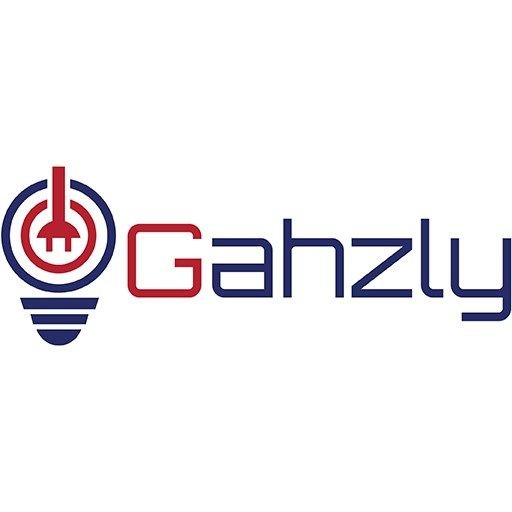 What are the features of Jeezly ?
What are the features of Jeezly ?
Since we are talking about a site that is preferred by many people around the world, there is no doubt that it is a site full of various features and characteristics. Therefore, we have decided to devote our next paragraph to pointing out the most prominent features of the Jezli site.
One of the most prominent features of the site is the proportionality of prices. On the Jeezly website, you do not have to worry about the imaginary prices of the products, as is the case with most sites that display their products on the Internet.
The price of delivering products is very reasonable and not expensive, and the site accepts delivery to various countries, without forgetting that it accepts free shipping on some products.
One of the features of the site is also the high quality of its products, as it is impossible to find a poor quality product. Rather, the Jezli website deals with the major companies, Philips, for example, and other famous brands, so you must remove from your mind the idea of the poor quality of one of the products. Another advantage of the site is that it does not specialize in one type of product, but rather you will find various types of products on it, for example, electrical appliances, hand tools, mechanical devices, paints, packages for establishing apartments, and many other types.
Jeezly website also accepts what is known as the shopping cart, which makes it easy for you to filter the products you want to buy and put them in one package in order to be able to pay with the click of a single button.
Accepts multiple payment methods.
We are pleased that you visit our social media pages, where we publish exclusive offers on our website.
Our Facebook page is here .
Our Twitter account is here .



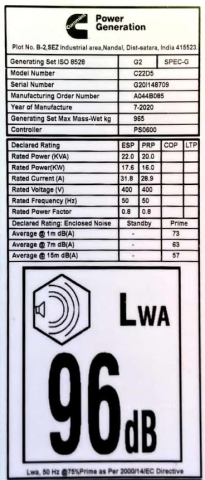
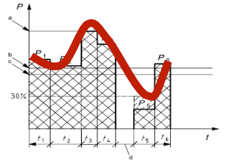
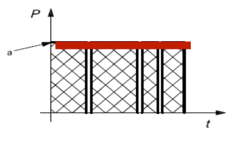
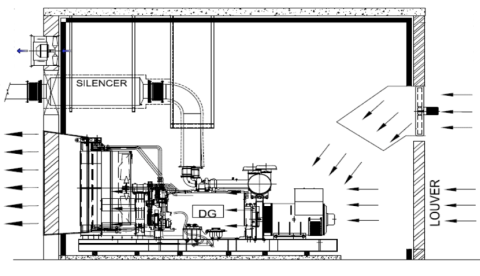




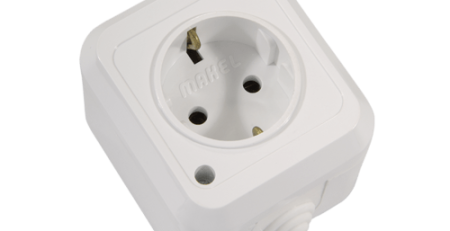
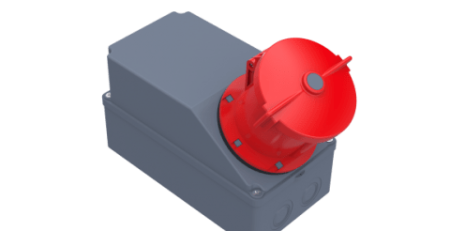



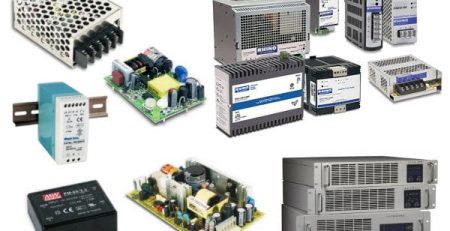

Leave a Reply
You must be logged in to post a comment.